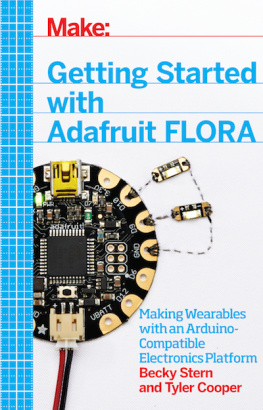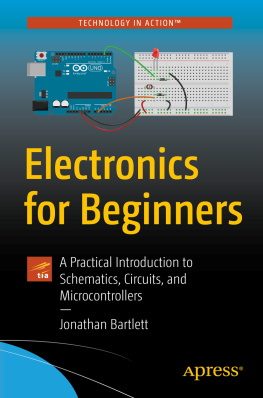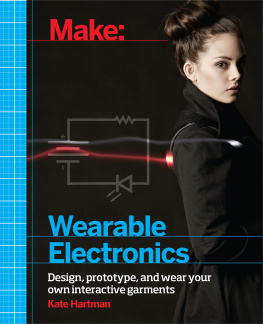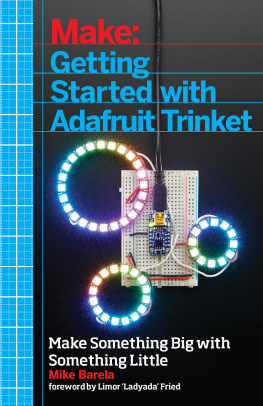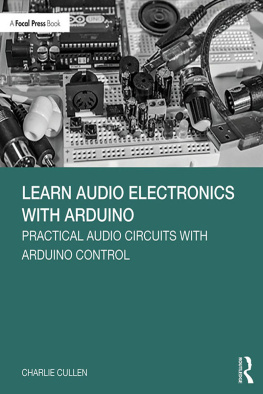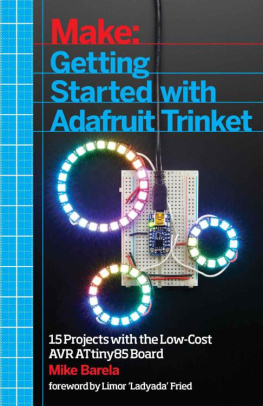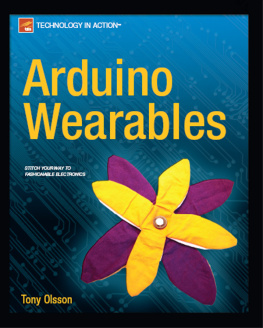Welcome to the dawn of the age of wearable electronics. Every day there are new ways to augment flesh and bone with flashing lights, bits and bytes. Steve Manns early wearable tech getups have given way to stylish devices like Google Glass. It goes to show that any truly good idea will be refined and iterated upon until the positive user experience outweighs any drawbacks, causing it to catch on. We are at that pivotal moment in DIY wearable electronics.
Wearable Electronics
From the badge-style communicators and Borg we see on Star Trek to the LED-soled sneakers that every kid seems to have, its a perfect time to both imagine and build the most creative wearable electronics the world has seen. Wearable electronics are taking off in celebrity performance wear and red carpet fashion. Couture price tags accompany custom designs, dripping with pixels, seen on Katy Perry, U2, Kanye West, Lady Gaga, Madonna, Rihanna, OK Go, and more.
At Adafruit weve been thinking about how we can provide the best resources for those learning how to make wearables fun and useful. So we developed FLORA, a tiny sewable circuit board and microprocessor that can talk to sensors, light up color-changing LEDs (aka NeoPixels), and much more. FLORA and the NeoPixels get us closer to building a DIY video jacket at home without the $20,000 price tag.
Of course, most of us are already carrying a wearable electronic device, in the form of a smartphone. We take them with us everywhere, and their development fuels many technological advances, such as the miniaturization of batteries. Not satisfied with off-the-shelf hardware, we mod our phones or create ways to interact beyond the screen by connecting them to other hardware via Bluetooth. From the typical hands-free headsets to the iPhone-controlled LED dresses in CuteCircuits 2014 spring collection, we expect to see a lot more development of wearables communicating with phones via Bluetooth in the next few months.
High-tech accessories like USB storage cufflinks are an updated take on the age-old quest to store data on the physical body, like tattoos or military dog tags. Displaying biometric data such as heart rate via a blinking headband or pocket square opens new avenues of expression and communication.
Even without a phone, wearables can augment our senses and wardrobes. DIY fashion items like GPS navigation shoes or motion-sensitive light-up skirts are starting to look sleeker and more subtle than ever before. We love the idea that our clothes could give us super powers, such as guiding us home or turning off TVs so we can eat in peace at our favorite restaurants.
Bike projects have a special allure for wearables makers, since they (arguably) improve safety while looking great at the same time. Weve seen wearable turn signals pop up on hoodies and bags over the years, and each time its a more stylish iteration thats easier to build with a smaller battery pack.
People who build wearable electronics have a passion for combining technology, fashion, and crafts. We hope that reading this book will ignite that passion in you.
What Is FLORA?
) is small enough to embed into any wearable project, and it has large pads for sewing with conductive thread. The round shape means there are no sharp corners to poke you through your garment. Its engineered to be the easiest-to-use way to build your own expressive and functional electronic fashions, interactive plush toys, papercrafts, data logging devices, and e-textile experiments.
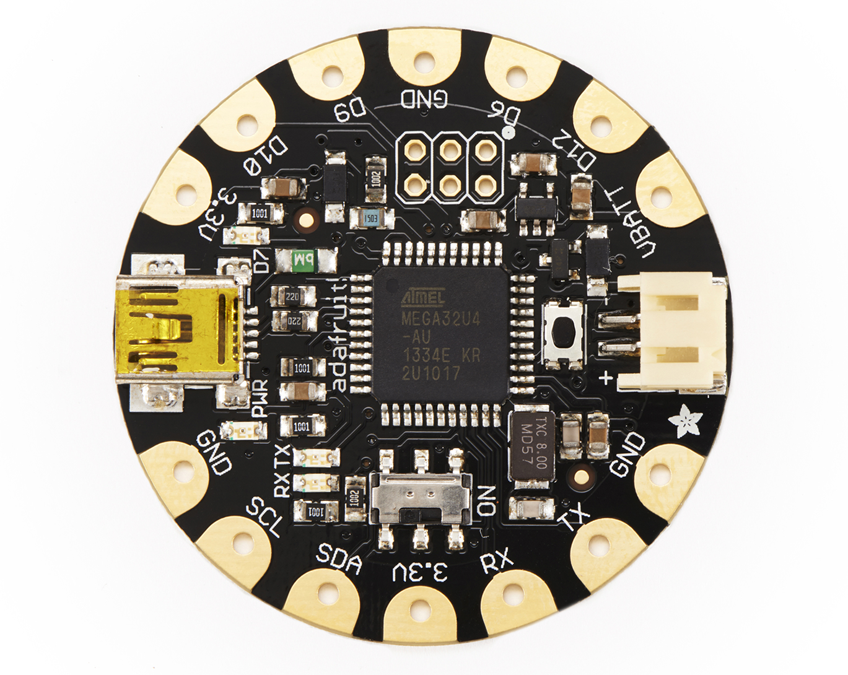
Figure P-1. FLORA main board
The 14 pads are laid out to make it easy to connect sensors like a sewable motion sensor, a color sensor, the FLORA Ultimate GPS module, or the FLORA light sensor. Power and ground buses are interleaved with data pads specifically to prevent crossed threads. But the most innovative modules in the FLORA family so far are the FLORA NeoPixelsspecial addressable color-changing LED pixels designed to be daisy chained and easy to sew. We hope FLORA enables the creation of large textile displays with NeoPixelsa DIY video jacket!
FLORA is extremely beginner-friendly and easy to use because it includes a polarized connector and protection diodes, which make it difficult to destroy even if the battery is connected backward. You can use a wide variety of battery packs, from 3.5 to 16 volts. FLORA has four indicator LEDs that let you know about the boards power status and data transmission.
Since it uses the powerful ATmega32u4 microprocessor, FLORA has built-in USB support, allowing it to act as a keyboard or mouse just by plugging a cable into its mini USB connector. USB support also eliminates the need for a separate programmer chip, so no additional hardware is required. Although FLORA is not the first round Arduino-compatible board (the LilyPad Arduino was released in 2007), it is the first wearable platform capable of creating large textile pixel displays and USB computer/phone controllers.
), so youll never lack project ideas or sample code to get you started.
Conventions Used in This Book
The following typographical conventions are used in this book:
ItalicIndicates new terms, URLs, email addresses, filenames, and file extensions.
Constant widthUsed for program listings, as well as within paragraphs to refer to program elements such as variable or function names, databases, data types, environment variables, statements, and keywords.
Constant width boldShows commands or other text that should be typed literally by the user.
Constant width italicShows text that should be replaced with user-supplied values or by values determined by context.
Note
This element signifies a tip, suggestion, or general note.

